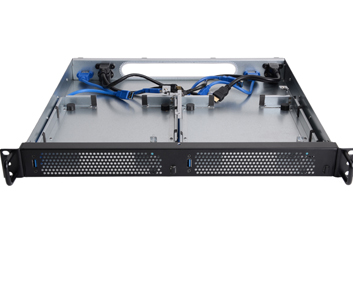
- #MAC MINI SERVER CASE UPGRADE#
- #MAC MINI SERVER CASE BLUETOOTH#
- #MAC MINI SERVER CASE PLUS#
- #MAC MINI SERVER CASE PROFESSIONAL#
Would a Touch ID sensor somewhere on the Mac mini be that silly? I’d use it. Unless you’ve got an Apple Watch, you’ll often be typing in your passcode when the mini wakes from sleep, which works against the speed improvements. Other benefits of the M1 chip, like instant on, aren’t as obvious when using a Mac mini compared to a laptop. They work fine after setting up the machine, but just be aware so you don’t run into this initial headache like I did.Ĭinebench R23 Multi looped for 30 minutes For initial setup, you need a wired keyboard and mouse my Logitech ergonomic keyboard and MX Master 3, which both connect over Bluetooth, were useless. I’ve also got to point out that getting up and running with the Mac mini can be a hassle.
#MAC MINI SERVER CASE BLUETOOTH#
Considering the speaker advancements Apple has made with its laptops, I wish it would put in some more effort here - even if the vast majority of people will plug external speakers into the mini’s headphone jack or use Bluetooth audio. It’s tinny, hollow, and just plain bad even the macOS Big Sur startup chime sounds embarrassing compared to my thunderous 16-inch MacBook Pro. There’s still a speaker inside the Mac mini, but it’s the kind of speaker you’ll never, ever want to use. (You’re also now limited to connecting two external displays directly to the mini instead of three, though one of them can be a 6K monitor.) The Intel Mac mini remains available for those that demand maximum ports or more RAM, which I’ll get into later. But there’s nothing more convenient than built-in ports, and looking at this objectively, it’s a downgrade for the mini’s expandability. Technically, the USB-C ports are more advanced (USB 4), and you can daisy-chain Thunderbolt devices to your heart’s content.
#MAC MINI SERVER CASE PLUS#
Apple has gone from four USB-C / Thunderbolt 3 ports to just two - plus the pair of USB-A ports that are still present. I say mostly because compared to the new MacBook Air and 13-inch MacBook Pro, the Mac mini has actually undergone the most significant outward design change: it lost a couple of ports. As a result, it’s technically the best performer - even if only by a smidge.īuy for $699.00 from Apple Buy for $699.00 from B&H Photo Buy for $1,299.00 from B&H PhotoĪside from returning to a silver exterior from the previous space gray, this mini looks mostly like the old one. Like that machine, the mini has a fan for cooling, but it also has the most efficiently cooled chassis of all the new M1 Macs. But the Apple M1 chip stays the same no matter which configuration you choose, and it matches the one in the new 13-inch MacBook Pro.

The review unit I received costs $1,299, as it increases the SSD size to 1TB and doubles the memory. For that money, you get an eight-core CPU, eight-core GPU, 256GB of storage, and 8GB of RAM. (It’s also worth noting that Apple was using the mini as its early Arm test unit for developers, so the company was already partway to a consumer product.)Īpple has dropped the starting price for the M1-powered Mac mini down to $699, which is $100 less than before.
#MAC MINI SERVER CASE UPGRADE#
Apple opened new possibilities for the mini with the big upgrade it got in 2018, and two years later, it’s one of the first three Macs to transition away from Intel processors and showcase the potential of Apple silicon and the M1 chip.
#MAC MINI SERVER CASE PROFESSIONAL#
Sure, most people go for the traditional experience and plug in a display, mouse, and keyboard - but you can also have it serve as a home theater PC, or put it to work with professional photo or audio editing, or turn a group of minis into a server farm. The Mac mini has always been Apple’s most flexible desktop computer.


 0 kommentar(er)
0 kommentar(er)
